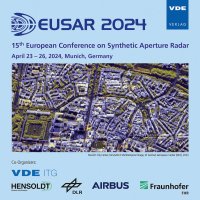Analysis and Optimization of MirrorSAR Synchronization
Conference: EUSAR 2024 - 15th European Conference on Synthetic Aperture Radar
04/23/2024 - 04/26/2024 at Munich, Germany
Proceedings: EUSAR 2024
Pages: 6Language: englishTyp: PDF
Authors:
Ustalli, Nertjana; Krieger, Gerhard; Mittermayer, Josef; Villano, Michelangelo
Abstract:
Phase synchronization poses a significant challenge for multistatic synthetic aperture radar (SAR) systems. A novel concept, called MirrorSAR, has been introduced, which relies on a configuration of transmitter and receiver satellites positioned at separate locations. In this setup, the receiver satellites serve as mirrors or space transponders, redirecting the radar echoes back to the transmitter. This configuration simplifies the receiver functionality and enables the utilization of cost-effective platforms. Within the transmitter, the forwarded radar signals are coherently demodulated using the same oscillator responsible for generating the radar pulses. This eliminates the need for a bidirectional phase synchronization link between the transmitter and receiver, as done in TanDEM-X, thus allowing for innovative synchronization approaches that guarantee the desired bistatic and interferometric performance, while keeping the receiver complexity low. This paper addresses in detail this phase synchronization approach and introduces optimized implementation aspects. The phase synchronization accuracy is assessed through simulations based on interferometric TanDEM-X data. Residual phase synchronization errors smaller than 1deg are achieved for typical oscillators.


